Computing Relics
IBM shows us some archaic artefacts from the early days of personal computing.IBM Mainframe
 Don't be fooled by the comparatively small CRT monitor; the actual computer behind this would have been colossal.
Don't be fooled by the comparatively small CRT monitor; the actual computer behind this would have been colossal. This is the face of personal computing in the 1970s, when your computer was a terminal that connected to a mainframe computer.
Former IBM veteran Terry Muldoon recalls a client that sang the praises of this terminal. 'The guy just pointed at it and said "this is so good!"' says Muldoon.
'Apparently there was a half-day course to learn how to use this, and a graphic utility, so he could now do business graphics in front of him and print it out. The trouble was you needed a mainframe at the back of it.'
The cost of the mainframe? Several million pounds.
IBM 5110
This is more like it, you might think. There's now a screen built into a computer, as well as disk drives and a printer. Meet the IBM 5110; the beginning of what you could loosely term 'portable computing.' Announced in 1978, the 5110 was the successor to the earlier 5100, adding support for floppy drives. Two 8in floppy drives can be seen in the huge tower box, as well as an 8in disk itself, with a box of Ibuprofen for scale. Despite their huge size, 8in floppy disks from this time were only single-sided, single-density, and could only hold 160KB of data.Even at this point, however, the screen is really only a small part of the equation. 'People ask me why there's a printer there,' says Muldoon, 'and it's because this is really an operator's console. You set the program running, and the program prints out – you're using this screen to control the machine, but the program is on the printer.'
IBM System/23 Datamaster
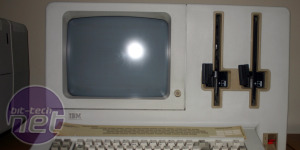 Moving one step closer to the PC as we know it is the System/23 Datamaster from early 1981. Based on an Intel 8085 processor, the machine can address up to 256KB of memory and features a pair of 8in floppy drives.
Moving one step closer to the PC as we know it is the System/23 Datamaster from early 1981. Based on an Intel 8085 processor, the machine can address up to 256KB of memory and features a pair of 8in floppy drives.However, the machine still cost $10,000, which meant it was quickly usurped by the significantly cheaper (and generally more powerful) PC 5150 when it was released in the US later that year.
IBM XT
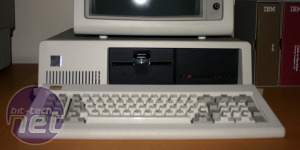 After the PC 5150 came the IBM PC XT 5160 in 1983 - the same year that the PC 5150 was finally released in the UK. The PC XT included a hard drive as standard, as well as MS-DOS 2 to support the hard drive and directory systems for file management.
After the PC 5150 came the IBM PC XT 5160 in 1983 - the same year that the PC 5150 was finally released in the UK. The PC XT included a hard drive as standard, as well as MS-DOS 2 to support the hard drive and directory systems for file management.The PC XT could also address up to 640KB of memory, rather than the 256KB limit on the 5150.
IBM PC Jr 4860
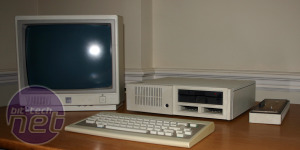 In order to make the IBM PC more appealing to the home market, IBM released the PC Jr in the US in 1984. The standard spec came with the same 4.77MHz 8088 CPU as the PC 5150, along with 64KB of memory. However, the machine also came with a pair of joystick ports as standard, as well as ROM cartridge slots in the front, which could hold games. The machine was a major flop in the US, and as a result was never released in Europe.
In order to make the IBM PC more appealing to the home market, IBM released the PC Jr in the US in 1984. The standard spec came with the same 4.77MHz 8088 CPU as the PC 5150, along with 64KB of memory. However, the machine also came with a pair of joystick ports as standard, as well as ROM cartridge slots in the front, which could hold games. The machine was a major flop in the US, and as a result was never released in Europe.IBM Convertible
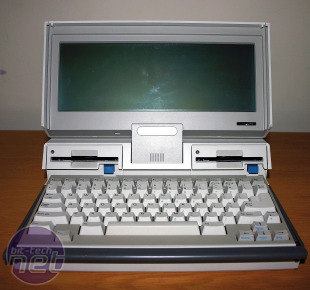 Portable computing took another step forward in 1986 when IBM released the Convertible, which was also its first PC to feature 3.5in 720KB disk drives, rather than 5.25in 360KB drives.
Portable computing took another step forward in 1986 when IBM released the Convertible, which was also its first PC to feature 3.5in 720KB disk drives, rather than 5.25in 360KB drives.The machine is called a Convertible because you can detach the screen and use the base unit as a standard desktop machine under a monitor, or you can fold it up into a portable unit with handle that weighs 5.8kg.

MSI MPG Velox 100R Chassis Review
October 14 2021 | 15:04


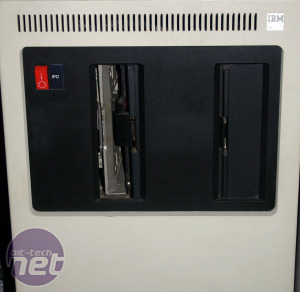
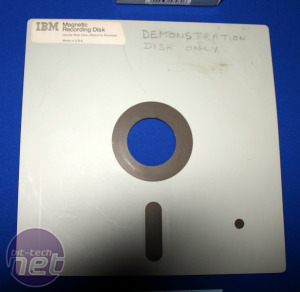
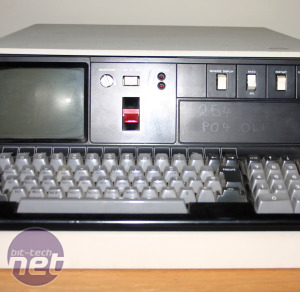
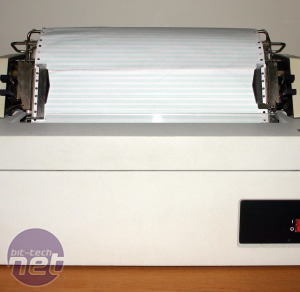







Want to comment? Please log in.